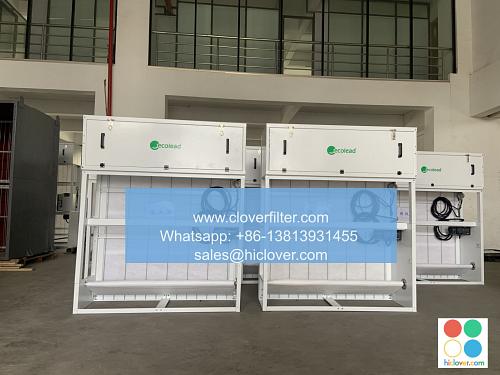Air Filter Regulations and Testing Standards: A Guide to Compliance

The air filtration industry is subject to various regulations and testing standards to ensure the quality and performance of air filters. These regulations and standards vary by country and region, but they all share the common goal of protecting public health and the environment. In this article, we will provide an overview of the key air filter regulations and testing standards, highlighting various application areas such as industrial air filtration, commercial HVAC systems, and residential air purification.
Introduction to Air Filter Regulations
Air filter regulations are established by government agencies and international organizations to set minimum requirements for air filter performance, safety, and environmental sustainability. These regulations cover various aspects of air filtration, including filter efficiency, pressure drop, and emissions reduction. Compliance with these regulations is crucial for air filter manufacturers and users to ensure the effective removal of particulate matter, gases, and odors from the air.
Key Air Filter Regulations and Standards
Some of the key air filter regulations and standards include:
- ASHRAE 52.2: This standard sets the minimum requirements for air filter performance, including filter efficiency and pressure drop, in commercial HVAC systems.
- ISO 16890: This international standard provides a framework for testing and evaluating air filter performance, including filter efficiency, dust holding capacity, and emissions reduction.
- EN 779: This European standard sets the requirements for air filter performance, including filter efficiency and pressure drop, in industrial air filtration applications.
- EPA Energy Star: This program provides guidelines for energy-efficient air filters, including residential air purification systems and commercial HVAC systems.
- ASTM D2986: This standard provides a test method for evaluating the performance of air filters, including filter efficiency and pressure drop.
- ISO 11155: This international standard provides a test method for evaluating the dust holding capacity of air filters.
- EN 13271: This European standard provides a test method for evaluating the emissions reduction performance of air filters.
- Industrial air filtration: Air filters used in industrial processes, such as dust collection, fume extraction, and gas filtration, must comply with regulations and standards such as EN 779 and ISO 16890.
- Commercial HVAC systems: Air filters used in commercial HVAC systems, such as office buildings, hospitals, and hotels, must comply with regulations and standards such as ASHRAE 52.2 and EPA Energy Star.
- Residential air purification: Air filters used in residential air purification systems, such as home air purifiers and whole-house air filtration systems, must comply with regulations and standards such as EPA Energy Star and UL 867.
Testing Standards for Air Filters
Testing standards for air filters are designed to evaluate their performance, safety, and environmental sustainability. These standards cover various aspects of air filtration, including filter efficiency, pressure drop, and emissions reduction. Some of the key testing standards for air filters include:
Application Areas for Air Filter Regulations and Testing Standards
Air filter regulations and testing standards apply to various industries and applications, including:
Conclusion
In conclusion, air filter regulations and testing standards play a crucial role in ensuring the quality and performance of air filters. Compliance with these regulations and standards is essential for air filter manufacturers and users to ensure the effective removal of particulate matter, gases, and odors from the air. By understanding the key air filter regulations and testing standards, including ASHRAE 52.2, ISO 16890, and EPA Energy Star, industries and applications such as industrial air filtration, commercial HVAC systems, and residential air purification can ensure compliance and provide clean and healthy air for occupants.
It seems like you haven’t provided a specific question or topic for me to address. Could you please provide more details or clarify what you would like to know or discuss?

